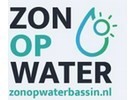Aquasol Solar, known for ZonopWaterbassin.nl, has developed a floating solar system specifically for horticulture. Therefore, the developments in horticulture and the effects of the Budget Memorandum are of direct interest to the company. Hans van Luijk gives an update, including on how the company is scaling up.
Production costs kwH electricity to go down
After studying the Budget Memorandum, Hans expects that especially the development of the various relevant levies will be of great importance for solar water systems. "Looking at the fourth bracket that greenhouse entrepreneurs are mostly in, the energy tax on gas will increase by 250% in 2024, and by 2025 it will have increased by 400%. Producing electricity through a CHP will, therefore, become substantially more expensive. This is because an additional levy is also looming, namely on the production of electricity from the CHP for its own use. The energy tax on electricity remains almost the same."
Demand for electricity is being forced upwards by the extreme increase in energy tax on gas (but also on fuels, etc.), he concludes. "So far, this effect has failed to materialize, but these kinds of increases are not expected to miss their mark. So the overall conclusion is that both gas and electricity prices will continue to rise. One due mainly to rising levies and the other due to increasing demand and more expensive production costs."
For Aquasol Solar's solar system, electricity production costs are expected to go down. "We still manage to increase production per square meter of system area every time. At a lower investment cost. This, coupled with an, in all probability, increasing feed-in price for electricity and/or increasing efficiency if the electricity is converted into heat, will increase the financial return of our system and shorten the payback period. In short, what we produce with our system will increase in production value where the production cost to generate a kWh with our system will decrease."

Scaling up
Willem Verwoerd and Hans van Luijk, the founders of Aquasol Solar, therefore look to the future with confidence. The company is receiving more and more requests for solar panels on water basins. This year alone, 20 water basins in the Netherlands and abroad at greenhouse horticulture companies have been fitted with solar panels by ZonopWaterbassin.nl (including at member companies of the Oxin cooperative, such as the large pepper growers Brazander, Tas, and Hoogweg).
Several are already planned for next year, shares Willem. "We will now scale up construction capacity to be able to do more work in a shorter time. This will enable us to take on even more projects."
In order to go full steam ahead, two 4.5m telescopic arm articulated haulers have been purchased. These allow the solar panels to be placed on the construction platform near the water basin.

Hans van Luijk (left) receiving the keys to the two new articulated haulers
Inverters
In terms of taxation, things are going to change, but technical developments are not standing still either. The latest inverters being used are supply and demand controllable. "As a result, they can be turned on or off by growers themselves," he says.
For a few months now, ZonopWaterbassin has been using solar panels with N-type technology. "These are made of a specific type of silicon, which gives them a higher efficiency than traditional solar panels with P-type technology.
N-type solar cells have a higher efficiency than P-type cells because they are less sensitive to contaminants and defects in the material. "As a result, less energy is lost, and more energy is produced."
The new solar panels are not susceptible to LID or Light Induced Degradation. "That means their energy production is not affected by exposure to sunlight in the first few hours after installation. P-type cells, on the other hand, often suffer from LID and therefore lose energy."
N-type solar cells generally have a better temperature coefficient than P-type cells. "They are less sensitive to temperature fluctuations and thus can produce more energy in different weather conditions," he says. They also last longer. "This is because they are less prone to degradation and aging due to exposure to light and heat."
So overall, solar panels with N-type technology offer better performance, higher efficiency, and a longer lifespan than panels with P-type technology, concludes Willem. "The main disadvantage, however, is that N-type cells are more expensive to produce, so the cost of N-type solar panels may be higher than that of P-type panels."
For more information:
Willem Verwoerd 
Zon op Waterbassin
Honderdland 226
2676 LV, Maasdijk
Tel.: +31 (0)6 415 14 033
[email protected]
www.zonopwaterbassin.nl
